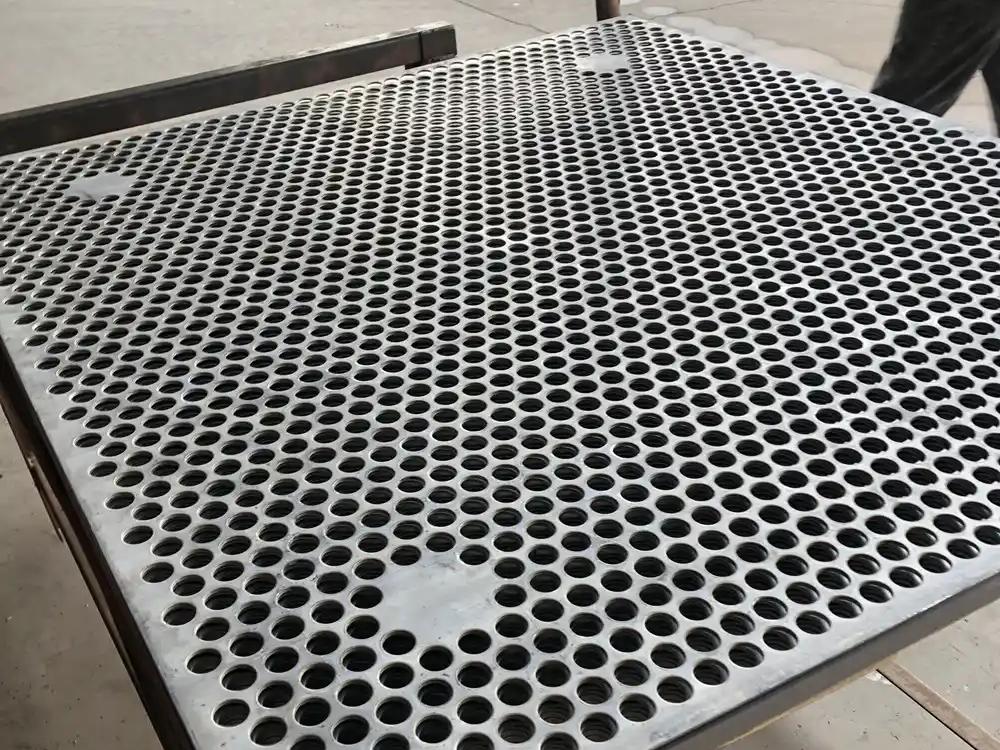What is Perforated Sheet Metal?
Source:www.cn-psp.cnAuthor:河北森驰公司 Last updated:2025-03-04 10:43:01 Browse:
A Brief Introduction to Perforated Sheet Metal
Perforated sheet metal is a type of metal material formed by creating specific hole patterns on a metal sheet through processes such as punching, laser cutting, or drilling. It possesses unique physical properties and aesthetic effects, making it widely used in various fields such as construction, industry, and home appliances. It has become an indispensable part of modern design and engineering.
Common materials used for perforated sheet metal include cold-rolled steel, hot-rolled steel, galvanized steel, manganese steel, wear-resistant steel, 201 stainless steel, 304 stainless steel, 316 stainless steel, 430 stainless steel, brass, copper, and various grades of aluminum. It is also possible to produce plastic sheets such as PP (polypropylene) plates.
Perforated sheet metal is a custom-made product, with options for thickness, size, hole diameter, and hole spacing all tailored to specific requirements. The thickness of the sheet can range from 0.1mm to 50mm, and the width of the sheet can be less than 1.5 meters, with lengths up to 4 meters. Common hole shapes include round holes, square holes, rectangular holes, diamond holes, and star-shaped holes. The spacing, diameter, and arrangement of holes can also be customized according to specific needs.

Perforated Sheet Metal
Characteristics and Advantages of Perforated Sheet Metal
Perforated sheet metal demonstrates many advantages due to its unique structure and functionality. These include:
Lightweight: Perforated sheet metal retains much of the metal's strength while reducing overall weight through perforations, making it easier to install and handle.
Light Transmission and Ventilation: Perforated sheet metal offers excellent light permeability and airflow, making it ideal for applications requiring high levels of ventilation or light transmission.
Decorative: The arrangement of different shaped holes creates unique visual effects, enhancing the aesthetic value of buildings, furniture, and other products.
Durability and Strength: Perforated sheet metal inherits the corrosion resistance, high-temperature resistance, and mechanical strength of the base metal, offering a long service life.
Easy to Process and Customize: Perforated sheet metal can be customized in terms of dimensions, hole shapes, and arrangements, providing flexible solutions for various project-specific requirements.
Main Application Areas of Perforated Sheet Metal
Due to its excellent performance, perforated sheet metal is widely used in a variety of industries. Here are some typical application scenarios:
Construction Industry: Perforated sheet metal is particularly prevalent in the construction sector. It can be used for building facades, curtain walls, balcony railings, ceilings, and more. Its light transmission and ventilation properties make it ideal for windows, shading, and ventilation designs. Additionally, the decorative effects of perforated sheet metal make it a popular choice for modern architectural facades.
Industrial Sector: In industrial applications, perforated sheet metal is commonly used for filtration, ventilation, shielding, and soundproofing. For example, many mechanical devices, power plants, and chemical plants use perforated sheet metal as external casings to ensure proper ventilation and heat dissipation while effectively preventing the entry of foreign particles.
Home and Furniture: Perforated sheet metal is also widely applied in home and furniture design. It is often used in the creation of bookshelves, desks, lighting fixtures, and screens. Not only does it provide excellent functionality, but it also adds a modern aesthetic to the overall design.
Automotive and Aerospace: In automotive manufacturing and the aerospace industry, perforated sheet metal is used for decorative panels on vehicle bodies and aircraft fuselages, as well as parts that require ventilation and weight reduction. These components benefit from perforated sheet metal by reducing weight, enhancing aesthetic appeal, and improving transparency.
Perforated sheet metal, with its unique structure and functionality, has become an essential material in modern industries such as construction, manufacturing, and home design. It offers numerous benefits, including lightweight, durability, light transmission, and ventilation. Its customization options and decorative effects make it highly versatile in design applications. When choosing perforated sheet metal, it is important to understand its material properties, hole design, and suitable applications to ensure optimal performance and aesthetic results.
